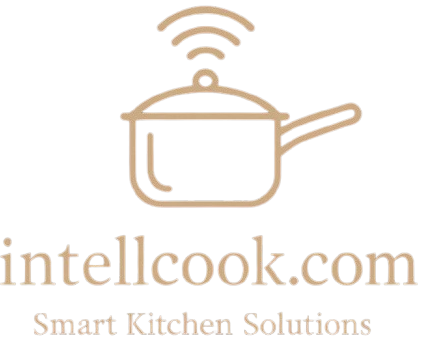Smart homes are everywhere now. You probably have at least one connected device in your house right now. Maybe you asked Alexa to turn off the lights last night. Perhaps you adjusted your thermostat from your phone while stuck in traffic. These everyday conveniences work because of invisible communication systems that connect your devices. Understanding these systems helps you build a smarter home that actually works the way you want it to.
The question everyone asks is simple: what is the most popular home automation protocol? The answer matters more than you think. Pick the wrong system and your devices won’t talk to each other. You’ll end up with a collection of expensive gadgets that refuse to cooperate. Choose wisely, and you get a home that responds to your needs seamlessly.
What Are Home Automation Protocols?
Think of protocols as languages your devices use to communicate. Your smart bulb needs to understand what your voice assistant is saying. Your motion sensor has to tell your security camera when something moves. Without a common language, they’re just isolated pieces of technology sitting in different rooms.
Smart home communication protocols handle everything from simple on-off commands to complex automation sequences. They determine how fast your devices respond. They affect how far signals can travel through your walls. They even impact how secure your smart home is from hackers. Protocol choice shapes your entire smart home experience.
Some protocols need a central hub to work. Others connect directly to your phone. Each approach has real advantages and real drawbacks. The protocol you choose affects which products you can buy and how much you’ll spend on your setup.
Another Good Read: 10 Home Automation Ideas For Beginners
Key Players in Home Automation Protocols
Five major systems dominate the smart home market today. Zigbee powers millions of devices from hundreds of manufacturers. Z-Wave offers tight security and reliable performance. Wi-Fi connects nearly everything to your existing router. Bluetooth handles simple device-to-phone connections. Matter promises to unite them all under one standard.
Each protocol serves different needs. Some excel at battery life. Others prioritize speed or range. Understanding what each one does best helps you match the right protocol to your specific situation.
Zigbee vs Z-Wave: The Longtime Rivals
These two have battled for dominance since smart homes became mainstream. Both create mesh networks where devices relay signals to each other. This design extends range far beyond what Wi-Fi can offer. Your smart plug in the garage helps your basement sensor communicate with your upstairs hub.
Zigbee vs Z-Wave debates fill countless forums. Zigbee operates on the crowded 2.4GHz band alongside Wi-Fi and microwaves. This can cause interference but allows manufacturers to build cheaper devices. Z-Wave uses dedicated frequencies that vary by region. You get cleaner signals but fewer device options.
Zigbee typically costs less for consumers. You’ll find it in IKEA smart bulbs and Philips Hue lights. Z-Wave devices command premium prices but deliver rock-solid reliability. Home security systems often prefer Z-Wave for this reason. Both protocols handle hundreds of devices without breaking a sweat.
Wi-Fi Automation Protocol: The Most Accessible Choice
Walk into any store and most smart devices you see use Wi-Fi. The Wi-Fi automation protocol wins on convenience. You already have a router. Your phone already connects to it. Setup takes minutes instead of hours. No wonder Wi-Fi powers the most popular home automation protocol for casual users.
Wi-Fi devices talk directly to your router and then to the internet. This means you can control them from anywhere on earth. Your thermostat doesn’t need a special hub. Your security camera streams video straight to your phone. This simplicity explains why newcomers gravitate toward Wi-Fi products.
The downsides show up as you scale. Wi-Fi chips drain batteries fast. Most Wi-Fi devices need constant power. Your network gets crowded when you add twenty or thirty smart products. Router crashes become more common. Range limitations mean you might need mesh network extenders for larger homes.
The Rise of Matter Home Automation Standard
Remember when you couldn’t text between iPhone and Android smoothly? The Matter home automation standard aims to end that kind of frustration for smart homes. Major tech companies united behind this protocol in 2022. Apple, Google, Amazon, and Samsung all support it now.
Matter lets devices from different manufacturers work together natively. Your Google Home can control your Apple-compatible bulb. Your Amazon Echo can trigger your Samsung SmartThings routines. No more checking compatibility charts before buying. No more returning products because they won’t connect.
This shift represents where home automation trends are headed. Matter runs on top of existing protocols like Wi-Fi, Ethernet, and Thread. Thread deserves special mention here. This low-power mesh protocol forms the backbone of many Matter devices. Early adopters report excellent performance and battery life.
Other Options: Bluetooth and Proprietary Protocols
Bluetooth smart home devices fill specific niches well. They excel at personal gadgets like smart locks and fitness trackers. Bluetooth Low Energy extends battery life to months or years. Setup feels intuitive since most people understand how to pair Bluetooth devices.
Range limits Bluetooth to single-room applications. Your phone needs to be nearby for control. This works fine for a bedroom lamp but fails for whole-home automation. Some manufacturers combine Bluetooth with mesh networking to expand coverage.
Proprietary systems like Apple HomeKit offer tight integration within their ecosystems. HomeKit devices work beautifully if you use only Apple products. Step outside that ecosystem and you hit walls. Amazon and Google have their own approaches too. These closed systems pushed the industry toward Matter as a neutral solution.
So What Is the Most Popular Home Automation Protocol?
Current numbers tell an interesting story. Wi-Fi claims the largest installed base by far. Millions of simple devices from thermostats to plugs use it daily. For raw popularity today, Wi-Fi wins hands down as the most popular home automation protocol worldwide.
However, serious smart home enthusiasts favor Zigbee. The protocol powers sophisticated setups with dozens or hundreds of devices. Smart home hubs from Samsung, Amazon, and others include Zigbee radios by default. This embedded support keeps Zigbee relevant and widely deployed.
Matter will likely reshape these rankings within a few years. Early adoption rates exceed expectations. Products bearing the Matter logo appear across every device category. The most popular home automation protocol five years from now will probably run on Matter’s universal standard.
Choosing the Right Protocol for Your Smart Home
Your budget influences this decision heavily. Wi-Fi devices cost less upfront but may require network upgrades later. Zigbee needs a hub but handles growth better. Z-Wave costs more but rarely disappoints on performance.
Consider how many devices you plan to install. Three or four Wi-Fi gadgets work fine. Thirty devices demand a mesh protocol. Smart home compatibility becomes critical as your system grows. Buy devices that can work together now and expand smoothly later.
Home size matters too. Small apartments do fine with Wi-Fi or Bluetooth. Larger houses benefit from mesh protocols that extend range naturally. Thick walls and multiple floors favor Zigbee or Z-Wave over Wi-Fi.
Final Thoughts
The most popular home automation protocol depends on who you ask and when. Wi-Fi dominates today because of its accessibility and simplicity. Zigbee serves power users who demand reliability and scale. Matter promises to make these choices less critical by bridging everything together.
Your best move is focusing on smart home compatibility rather than picking sides. Buy devices that support multiple protocols when possible. Invest in hubs that speak several languages. The smart home landscape changes fast. Flexibility keeps your investment relevant as new standards emerge.
Start small with one protocol. Learn how it works. Expand gradually as your needs become clearer. The most popular home automation protocol for your situation is the one that solves your specific problems without creating new ones.





